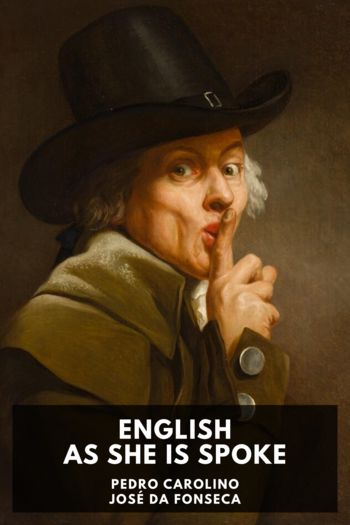Pablo de Segovia, the Spanish Sharper, Francisco de Quevedo [primary phonics .txt] 📗

- Author: Francisco de Quevedo
Book online «Pablo de Segovia, the Spanish Sharper, Francisco de Quevedo [primary phonics .txt] 📗». Author Francisco de Quevedo
By these Visions (by himself never so called collectively) the name of Quevedo has been chiefly made known out of Spain. They are among the most characteristic of his works, in which his audacious humour and impetuous fancy found full exercise and a congenial element. They have been often translated into the various European languages, and were much read and quoted in the commerce of letters. Besides these, the Visions proper, which are serious satires levelled at the abuses and the evils of the times, there were numerous other squibs, jests, and pasquinades, of less solid substance or of lower aim, in rebuke of the fashionable follies or the vulgar tastes, such as “El Cuento de los Cuentos” (The Tale of Tales), which is levelled at the excessive use of proverbs; “El Caballero de la Tenaza” (The Knight of the Forceps), being the apology of a miser for himself; “La Perinola” (The Teetotum), which is a personal attack on the fussy and frivolous Pérez de Montalván, one of Quevedo’s favourite butts. There are numerous others, of which the very titles are so coarse as not to be fit for mention—ephemeral and obscure, which have died with the occasions which gave them birth.
That at least before 1613 Quevedo was esteemed, by those best capable of judging, as among the best wits of the time, appears from the very flattering notice of him which is contained in Cervantes’ Viage del Parnaso (Voyage to Parnassus). He is there called “Apollo’s son—son of the Muse Calliope”; and his aid is declared to be absolutely necessary in the war which the god of poetry is about to wage with the bad poets. It is true that Cervantes was in the habit of praising almost everybody, but from the warmth of the terms used, and from other indications in Quevedo’s own works, we may infer that the two greatest wits of the period had, as great wits rarely have, a just appreciation of each other. Lope de Vega also, who was of a different order of genius, as well of a nature dissimilar, ever suspicious of a rival and jealous of the applause given to another, could bring himself to speak of Quevedo in his Laurel de Apolo as “prince of the lyric poets,” the Juvenal of Spanish verse, who might rival Pindar and replace Apollo himself if the god were to fail.
But before Quevedo had made his name in letters he was destined to earn distinction in a public career, which afforded him a rare opportunity for displaying the versatility of his talents and the soundness of his judgment. Debarred from the profession of arms by his physical infirmity—he was lame of both feet from his birth—he was driven to seek a career in civil employment. An adventure which befell him at Madrid served to fix his destiny. Being in a church at Madrid during the Holy Week, he saw a gallant of the Court offer a gross insult to a modest woman. He interfered to protect her, swords were drawn, and Quevedo slew the aggressor. The slain man





Comments (0)